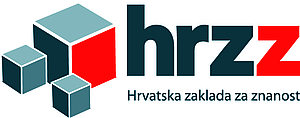Modelling Economic Growth – Advanced Sequencing and Forecasting Algorithm (MEGASFORA)
ABOUT THE PROJECT
The main objective of the project is to give a scientifically based answer to the questions “What are the causes of economic growth?” and “Whether economic growth can be forecasted and business cycles predicted?” A practical objective of the proposed research project is to build an optimal economic growth/cycle model using Advanced Growth Sequencing and Forecasting Algorithm (AGSIFAL) that we plan to build. In order to do so, an algorithm (selected from the best of artificial neural network model, structural econometric model, dynamic general equilibrium model, nonlinear econometric model, golden triangle model) for cycle/growth sequencing and forecasting will be developed. Sequencing of the economic growth on an international scale (119 countries) will be performed using business cycle tracer methods and novel golden triangle model developed by Škare (2010). Using individual country data, we plan to isolate growth determinants using three dimensional golden triangle model and spectral analysis techniques. Output, inflation and employment form the three dimension of the cycle/growth triangle that will be used for sequencing growth. After growth sequencing is finished, a best forecasting algorithm is built. Pairing isolated growth bases help us to rebuild a growth. Using different algorithm models, reconstructed economic growth series is compared to the actual growth series (observed data). Algorithm resulting in the smallest forecast error (RMSE) is selected as optimal to explain economic growth and predict business cycles. Economic growth forecast and business cycles predictions will be compared to the actual data over the observation period. If data match poorly actual observed data on economic growth/cycles this signify economic growth follow random walk that cannot be predicted. Consequently, business cycles can not be avoided. This conclusion will have important theoretical and policy implications both for the science of economics and economic agents.
Project duration: 16 June 2014 – 15 June 2018
Call number: IP-11-2013
Principal investigator: Professor Marinko Škare
PROJECT TEAM
-
Professor Marinko Škare, principal investigator
-
Professor Valter Boljunčić
-
Professor Guglielmo Maria Caporale
-
Professor Steve Keen
-
Professor Nawazish Mirza
-
Professor Soumitra Sharma
-
Professor Hazbo Skoko
-
Professor Tomasz Wolowiec
-
Roman Semko
-
Professor Manuel Benazić
Mieta Bobanović
-
Sanja Blažević
-
Tea Golja
-
Tea Hasić
-
Katarina Kostelić
-
Sabina Lacmanović
-
Romina Pržiklas Družeta
-
Danijela Rabar
-
Dean Sinković
-
Saša Stjepanović
-
Daniel Tomić
LATEST PROJECT NEWS
Read all the MEGASFORA project news
PUBLISHED PAPERS
2nd project year (June 2015-June 2016)
- Benazić, M. (2016): Business cycle synchronization between Slovenia and
the euro area: the Markov Switching regression model approach, The 35th
International Conference on Organizational Science Development
"Sustainable Organization", March 16th-18th 2016 in Portorož,
Slovenija. http://fov.uni-mb.si/conference/ - Benazić, M., Mašić, A. (2016): Utjecaj odabranih makroekonomskih
varijabli na stopu adekvatnosti jamstvenog kapitala hrvatskih banaka, U
monografiji: Aktualni problemi i izazovi razvoja financijskog sustava (Ur. Stojanović A.i Šimović H.), Ekonomski fakultet Zagreb. - Škare, M., Hasić, T. (2016) Corporate governance, firm performance, and economic growth – theoretical analysis, Journal of Business Economics and Management, Vol. 17, Issue 1, p. 35-51.
http://www.tandfonline.com/doi/abs/10.3846/16111699.2015.1071278 - Tomić, D. (2016) An alternative approach to the trade dynamics in Croatia. 12th International Scientific Conference on Economic and Social Development. Bangkok, Thailand, February 18-20.
- Tomić, D. and Pičuljan, M. (2016) Segmenting Terms of Trade; The Case
of Croatia. 35th International Conference on Organizational Science
Development: Sustainable Organization. Portorož, Slovenia, March 16-18. http://fov.uni-mb.si/conference/
1st project year (June 2014-June 2015)
CONTACT
Sanja Blažević, sanja.blazevic@unipu.hr
052/377-063
This project is fully supported by Croatian Science Foundation under the project number 9481









